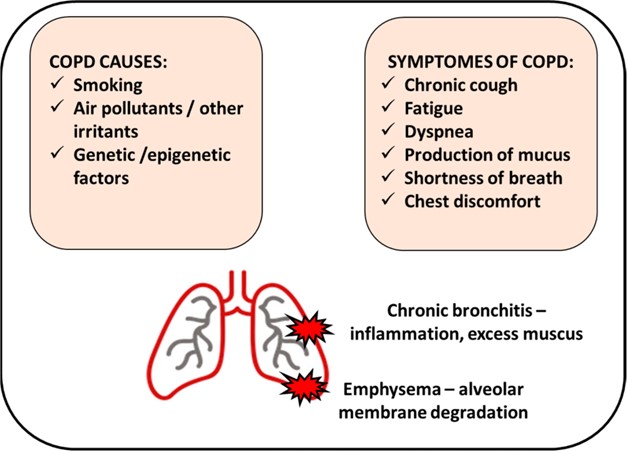The nurse is caring for a client newly diagnosed with emphysema. The nurse should prioritize which potential complication?
Self-care deficit.
Activity intolerance.
Impaired gas exchange.
Ineffective airway clearance.
The Correct Answer is C
Emphysema is a chronic obstructive pulmonary disease (COPD) characterized by the destruction of lung tissue and loss of elasticity in the alveoli. This leads to poor gas exchange, specifically the reduced ability of oxygen to enter the bloodstream and carbon dioxide to be eliminated from the body. Impaired gas exchange can result in hypoxemia and hypercapnia, leading to symptoms such as shortness of breath, fatigue, and decreased exercise tolerance.
While self-care deficit, activity intolerance, and ineffective airway clearance are all potential complications associated with emphysema, impaired gas exchange is the priority due to its direct impact on the client's oxygenation and overall respiratory function.
Addressing impaired gas exchange and optimizing oxygenation is essential to support the client's respiratory health and prevent further complications. Management strategies for impaired gas exchange may include administering supplemental oxygen, implementing respiratory treatments to improve lung function, and providing education on breathing techniques and energy conservation.

Nursing Test Bank
Naxlex Comprehensive Predictor Exams
Related Questions
Correct Answer is ["A","B","C","D","E"]
Explanation
It is important to assess the child's vital signs, including oxygen saturation (SaO2), to ensure their stability and identify any signs of respiratory distress or other abnormalities that may impact medication administration.
Prior to administering any medication, it is crucial to verify if the child has any known allergies to medications. This information is essential for ensuring the safety of the child and preventing any potential allergic reactions.
Before administering pain medication, the nurse must verify that the prescribed dosage is appropriate for the child's age, weight, and condition. Ensuring the correct dosage helps prevent medication errors and potential adverse effects.
It is important to use a validated pain assessment tool that is appropriate for the child's age and cognitive abilities. This allows for a comprehensive and accurate assessment of the child's pain level, helping guide appropriate pain management interventions.
Considering the child has cognitive and speech delays, the input from the parent regarding the child's pain is valuable. The nurse should assess and consider the parent's report of the child's pain in conjunction with other assessment findings to ensure effective pain management.
Subjective pain assessment is mentioned as a finding but may not require immediate action, as it needs to be combined with other assessment data for a comprehensive evaluation.
Correct Answer is D
Explanation
NPO status is crucial before a surgical procedure, especially when anesthesia will be administered. It helps prevent complications related to aspiration of gastric contents during the procedure. Failure to adhere to the NPO status can lead to serious respiratory problems, such as aspiration pneumonia.
It is important for the nurse to confirm the NPO status with the client to ensure that they have followed the appropriate fasting guidelines. This should be done to ensure the client's safety during the surgery.
While determining when the client last had pain medication, offering assistance to the restroom, and reviewing postoperative instructions are important aspects of preoperative care, confirming NPO status is the most critical nursing action in this particular scenario.
Whether you are a student looking to ace your exams or a practicing nurse seeking to enhance your expertise , our nursing education contents will empower you with the confidence and competence to make a difference in the lives of patients and become a respected leader in the healthcare field.
Visit Naxlex, invest in your future and unlock endless possibilities with our unparalleled nursing education contents today
Report Wrong Answer on the Current Question
Do you disagree with the answer? If yes, what is your expected answer? Explain.
Kindly be descriptive with the issue you are facing.
